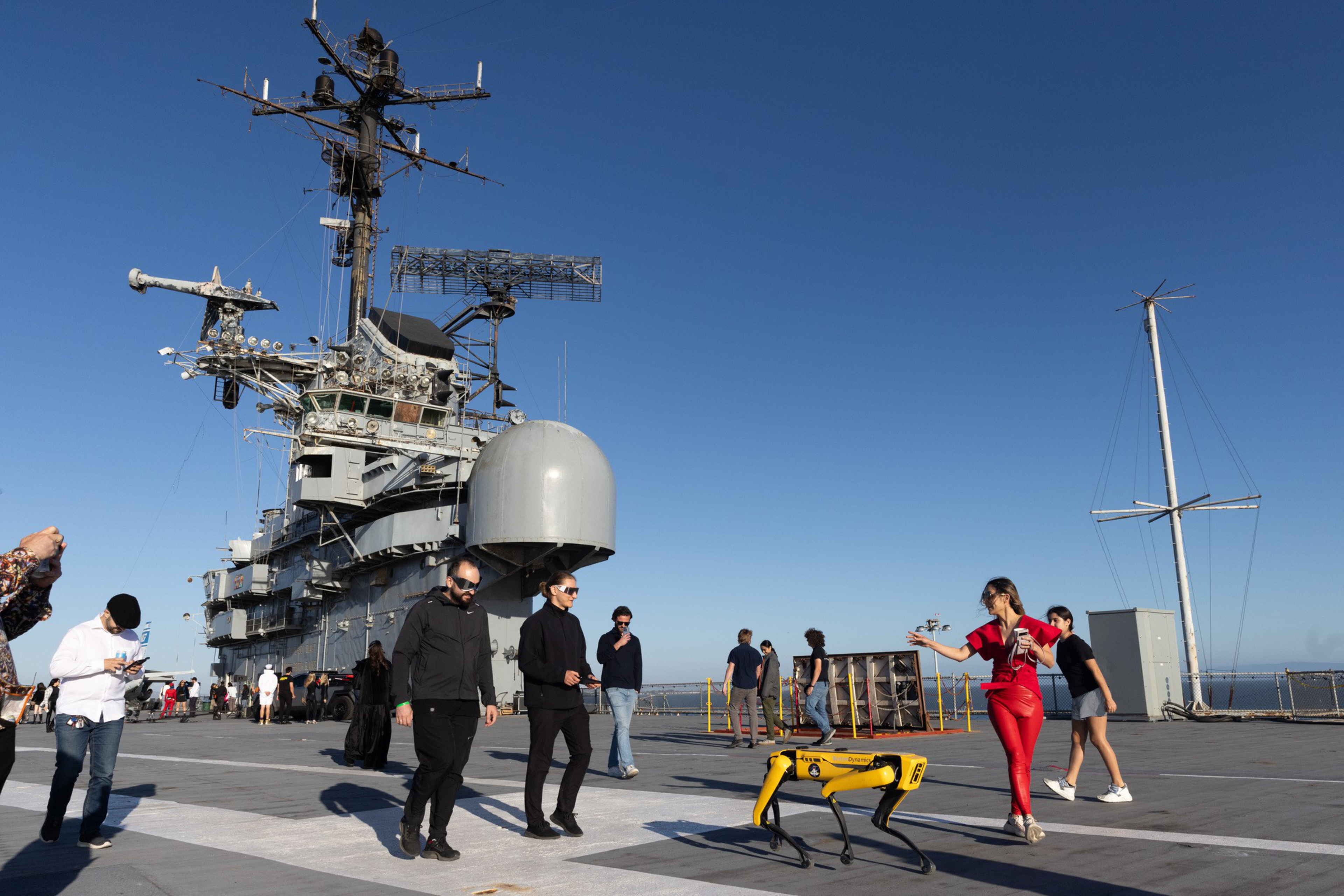After already winning the Warriors, could San Francisco soon seize the East Bay’s most historic warship as well?
Alameda’s USS Hornet Sea, Air, & Space Museum is exploring a move from its berth at the western end of West Hornet Avenue, Sam Lamonica, chair of the museum’s board, confirmed.
“The opportunity that would present itself for us to be on the waterfront in San Francisco would be a major game-changer for us in terms of attendance, visibility, and the ability for us to be able to share our STEM and educational programs with a broader community of underserved community folks,” he said.
The museum receives no government funding, operating on revenue from visitors, membership fees, and the labor of more than 400 volunteers. That financial reality has driven the institution to consider relocation for the better part of three decades, Lamonica said.
“We have had a number of discussions over the past 26 years about moving to the waterfront in San Francisco,” he explained. “We also had discussions for a while about moving outside of the new A’s park, if that would have ever happened. So we have always had discussions and have been researching options for relocating the ship where we could get more visibility.”
The museum has given itself a five-year window to make a move happen, should funding and regulatory approvals materialize. It would require tugboats, Coast Guard coordination, and what Lamonica described as “a significant amount of planning” to relocate the Essex-class carrier across the bay — a distance that, while geographically modest, carries substantial symbolic weight in the region’s cultural landscape.

By comparison, Lamonica acknowledged the presence of the SS Jeremiah O’Brien at Pier 35, as well as the labor that went into moving the USS Midway from its inactive-ship fleet in Bremerton, Wash., in 2003 to the Port of San Diego: “The Midway is probably one of the bigger success stories (opens in new tab) of an aircraft carrier that has become a museum.”
A spokesperson for Alameda said city officials are “aware that the USS Hornet Sea, Air, & Space Museum is looking into the possibility of relocating to the San Francisco waterfront over the next five years, driven by the opportunity to significantly increase its visitor base.”
While calling the Hornet “an irreplaceable part of Alameda’s identity and history,” the city pledges to “actively work to support their continued success.”
The Port of San Francisco offered measured caution. “The port has been approached to discuss this concept, but these discussions have been general and exploratory,” a spokesperson said. “Before any relocation plan is put in place, we would bring the proposal to the Port Commission and the community for feedback, and we have no plans to do so at this time.”
For some local historians and observers, the pattern of sports teams and cultural institutions moving away from their Bay Area roots reflects deeper anxieties about the region’s identity.
“We’ve seen the Raiders leave, we’ve seen the A’s wander up the road, and we’ve seen the Golden State Warriors over here in the city,” said Liam O’Donoghue, host of the podcast “East Bay Yesterday” and a seasoned tour guide. “Even I feel some type of way about it.”
Noting that the 894-foot-long USS Hornet, standing upright, would be 40 feet taller than the Transamerica Pyramid, O’Donoghue said the Hornet’s current location holds irreplaceable historic value.
“It wasn’t just located here for the last couple decades out of pure convenience,” O’Donoghue said. “This was a former naval air station. This was the home of several aircraft carriers, like the Hancock, the Enterprise, the Carl Vinson. There’s a huge naval history based at what’s now called Alameda Point.”
O’Donoghue noted that the Hornet also serves as a resonant educational experience for schoolchildren and scout troops who have visited for decades. “It’s one thing to read about World War II in a textbook, but it’s a totally different experience to explore an aircraft carrier,” he said.

Lamonica touted the Hornet’s status as a Smithsonian Institute affiliate, national and state historical site, and home to exhibits about the highly decorated 442nd Infantry Regiment, as well as its commissioning in late 1943, its service in World War II through the Vietnam era, and its use in the recovery of the Apollo 11 and Apollo 12 astronauts after their 1969 moon landings.
“It was actually decommissioned right after we retrieved the Apollo 12 astronauts. It was sold to a scrap yard and was towed down to Long Beach, where it was already being ready to be made into razor blades,” he said.
“They decided to bring it back up there one more time for this closing celebration, and some folks got together and said, ‘We can’t let the Hornet get scrapped.’ So they put together a robust program and funding and were able to keep the Hornet in Alameda.”
Still, Lamonica remains concerned about the museum’s financial viability. In order to flourish, he said, the Hornet requires “a safe and secure pier to be anchored at, a deep rich connection with the community, and the ability to have large events to ensure that people stay in tune to the rich history of our ship.”
The Navy has given its blessing to the concept, Lamonica said, though the move would require approvals from multiple agencies, including the Coast Guard.
He acknowledged that it was “absolutely not an easy decision for us.”
“We have really, really enjoyed our time in the historic location at the former Alameda Naval Air Station,” he said, “and our special relationship with the citizens in the city of Alameda.”
